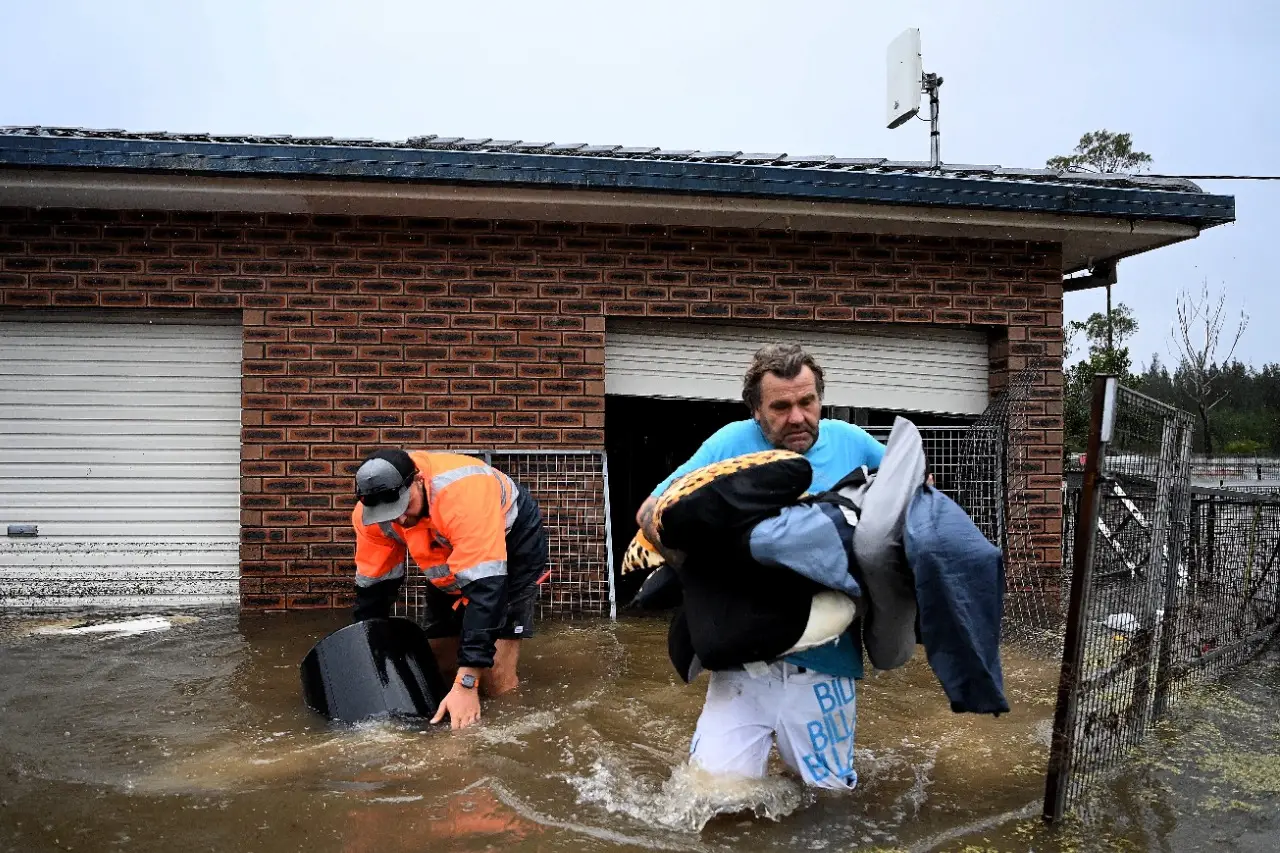An unprecedented flood crisis is unfolding across New South Wales, where relentless rain has triggered what authorities are calling a “one-in-500-year” flooding event. As of May 22, 2025, at least three people have died, one is missing, and more than 50,000 people have been isolated across the Mid North Coast and Hunter regions.
Emergency crews have conducted nearly 600 rescues, including helicopter rooftop extractions, as rivers surged to historic highs and inundated entire communities. The Manning River in Taree exceeded its 1929 flood record, rising to 6.37 meters, while rainfall totals in some areas reached 427mm in just two days, nearly five times the monthly average.
“This is unlike anything we’ve seen before,” said Emergency Services Minister Jihad Dib. “More rain is on the way, and the risks remain extreme.”
Fatalities and Missing Persons
Three confirmed deaths include:
- A 63-year-old man found deceased in his flooded Moto home
- A man in his 30s who drowned near Rosewood
- A 60-year-old woman whose vehicle was swept away near Brooklana
Authorities continue searching for a 49-year-old man missing in Nymboida, as search and rescue efforts intensify amid deteriorating weather conditions.
More Rain Forecast as Crisis Deepens
The Bureau of Meteorology has issued warnings for continued rainfall, predicting up to 200mm more over the next 48 hours. The deluge threatens to exacerbate flooding, especially in already devastated areas like Port Macquarie, Kempsey, and Taree.
Evacuation orders remain in place across multiple towns, with emergency shelters activated to accommodate displaced residents. Officials urge people to heed all warnings and evacuate immediately when instructed.
Disaster Response and Government Action
Both the New South Wales and federal governments have declared the affected areas eligible for disaster relief, covering 16 local government zones. Emergency funding is being deployed to support rescue operations and rebuild essential infrastructure.
Premier and emergency officials are urging the public to remain alert, avoid floodwaters, and monitor updates from SES and the Bureau of Meteorology.
“We’re dealing with extreme conditions, but our emergency services are working around the clock,” said a state spokesperson.
Affected Areas and Community Impact
The flooding has caused:
- 50,000+ residents cut off from road access
- 23,200 homes isolated
- Major highways and rail lines closed
- Widespread damage to crops, roads, and schools
Communities across Wauchope, Taree, Cundletown, and Gloucester are among the hardest-hit. Volunteer rescue teams and state emergency services continue to operate in dangerous conditions, prioritizing life-saving missions.
What Comes Next?
- Emergency teams continue rescue and relief operations across all flooded zones
- Weather monitoring remains critical, with further flash flood risks
- State and federal agencies preparing long-term recovery plans
- Disaster declarations expected to expand as damage assessments continue
As New South Wales braces for more rain, the focus remains on protecting lives and supporting devastated communities. This once-in-a-generation disaster underscores the urgent need for climate resilience, infrastructure planning, and sustained emergency funding to confront Australia’s growing extreme weather challenges.
Source; The Sydney Morning Herald



